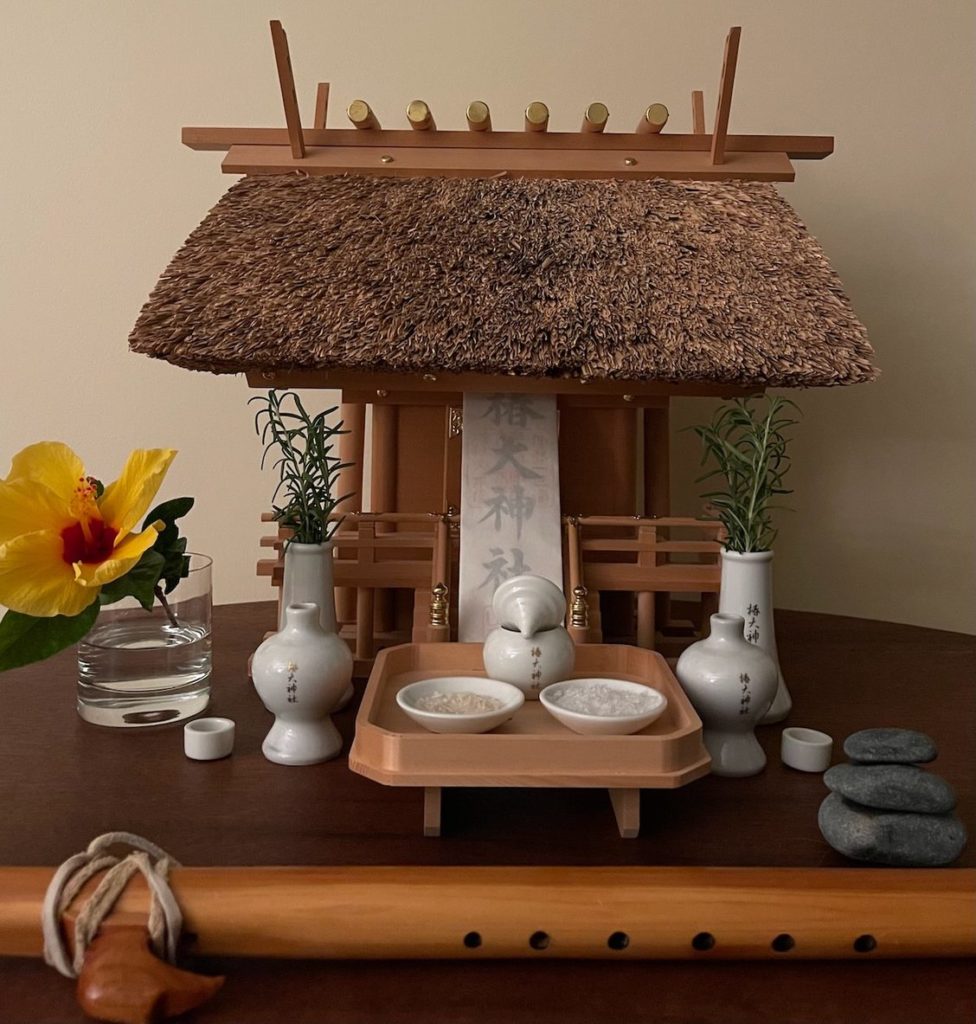
Gyō: The Art of Spiritual Practice
Gyō: Spiritual Practice
I’ve had several requests recently from people asking how to get started with a Shinto practice. Here are some simple suggestions.
Sendai Guji Yukitaka Yamamoto, the previous Chief Priest of Tsubaki Grand Shrine, taught me that “Gyō makes us bright and positive in daily life. Through gyō, we are able to enjoy life—to rid ourselves of impurities and to be renewed and fresh.”
Gyō means “to practice.” We should establish a simple practice that we do on a daily basis to brighten and hone our spirituality. To truly benefit, your spiritual routine should be regular and frequent.
- Set up a shrine shelf. Here, you should have an Ofuda or goshintai that is the seat for the essence of the kami.
- Have room for offerings to the kami where you place fresh water and/or salt, fruit, and flowers.
- Before prayer, bathe or wash your hands.
- Then approach the kamidana and clap your hands as you pray to the kamisama (2 bows, 2 claps, 1 bow), expressing appreciation for giving you the opportunity to live a new day.
- Pray for support in doing your best on this new day. Pray for protection for your loved ones.
This is the simple gyō to begin your day. This will set the tone of gratitude and acknowledgement of the divine and the sacred in your life.
What are other forms of gyō?
Chanting norito is important. Norito are ancient prayers that are written both for meaning and for sound. The word itself has a soul or spirit (kotodama), and so we chant in Japanese to retain the mystical qualities.
I recommend that you begin by learning Misogi no ŌHarai. This prayer connects us to the ancient mythology of Izanagi no Mikoto and the original misogi or purification in the river.
Harai—the sweeping away of impurities—is at the heart of Shinto. The practice of purification restores us to our innate brightness and lifts our spirit.
Practice saying the prayer out loud. The sounds and rhythm will gradually become familiar and flow easily. Then you can be immersed in the vibratory quality of the words, as well as the spiritual importance of the meaning.
I’m including the romaji (Japanese pronunciation) here, as well as the English translation. If you would like a kanji version, please send me an email!